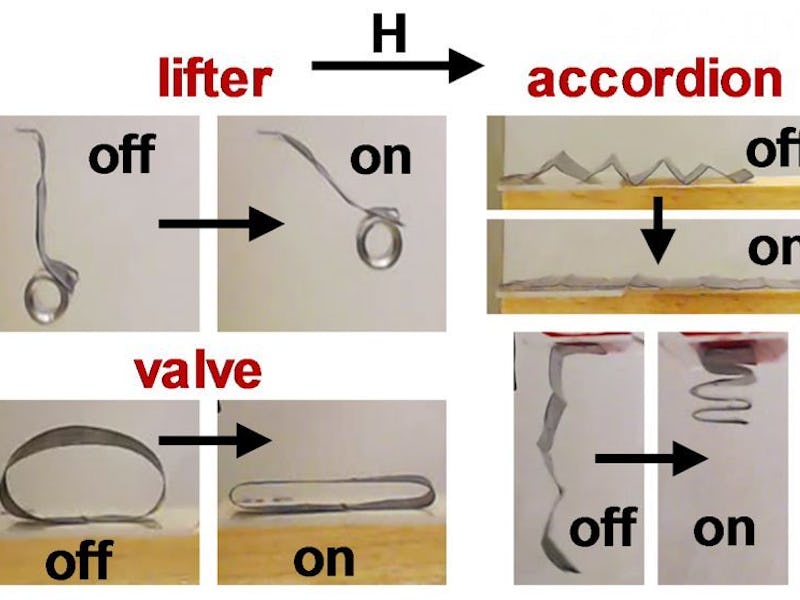Getting complex technology inside the human body is difficult — it’s hard to incorporate batteries, wires, and motors into something small enough to fit inside a person. But researchers at North Carolina State University have developed a new approach, using magnetic fields to control worm-like soft robots.
The team created a trio of simple robotic elements made from a special iron-laced material that responds to an applied magnetic field. By supplying the energy from the outside of the body, the magnitude of the force can be enormous, relative to the size of the implant; in this study, a cantilever-style lifter was shown to be able to raise over 50 times its own weight.
They also created an accordion-like structure can expand and contract along its own length like a muscle, and a long worm-like tube that can send a pulse or contraction down its length to ‘squeeze out the last bit of toothpaste.’ In reality, the “toothpaste” would likely be medicine in a remotely controlled, internal drug pump. Since it requires an external magnet to be present at all times, this isn’t the sort of tech that would ever be applied to a full-time implant like a pacemaker, but it could be uniquely useful for tech that only needs to be activated on specific occasions.
Study co-author Joseph Tracy said in an email to Inverse that the idea first arose from their prior work with magnetic nanoparticles. They had managed to use magnetic fields to align the nanoparticles within a polymer, setting them into a highly ordered structure when the polymer solidified. “We did a study on forming chains embedded in polymers, which got us thinking about magnetic actuation and then soft robotics as an application.”
The researchers discovered that they could set these magnetic particles inside thin films, and manipulate the material in predictable ways. Since most of the body’s flesh, blood, and bone isn’t magnetic, an external magnetic force can manipulate the internal tube without disturbing what’s around it. Think of a tube of toothpaste (or medicine) inside your arm, hooked up to a vein. A doctor with a magnet could squeeze medicine into your bloodstream without having to physically press on the arm, and the same process would work in the more vulnerable parts of the body, avoiding the pain and recurrent infections of a shunt or other device.
Asked whether any magnetic field could activate an actuator like this, perhaps on someone’s drug pump, Tracy admitted that, “Yes, I suppose application of a ‘malicious’ magnetic field could cause the device to respond.”
Tracy envisions the idea scaling “very large and very small. For large, maybe satellites… For very small, there could be applications in lab-on-a-chip devices.” Tiny, magnetically controlled actuators like those the team describes in its paper could become a fixture of the MEMS industry, too — the “microelectromechanical systems” that are in everything from smartphone accelerometers to ultrasound readers. Remember, the definition of “robot” is getting a whole lot wider these days.
There is no one magic bullet for internal robotics. For some specific uses, however, magnetic actuation could be the achievement that finally bring science fiction to life.
